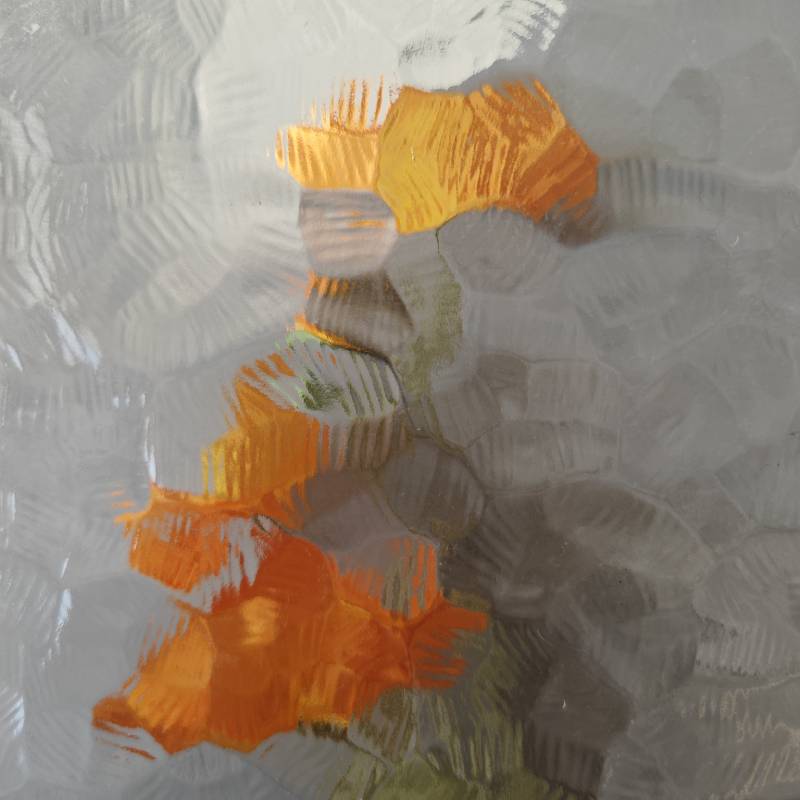The Strength and Beauty of Tempered Glass
Tempered glass, also known as toughened glass, is a type of safety glass that is up to five times stronger than regular glass. This remarkable strength is achieved through a process called tempering, which involves heating the glass to a high temperature and then rapidly cooling it. This process creates compressive stress on the surface of the glass, making it more resistant to breakage.
The beauty of tempered glass lies not only in its strength but also in its versatility. It is widely used in various applications, from architectural features such as windows and doors to automotive windshields and even in heavy-duty industrial equipment. Its transparency and clarity make it an ideal choice for these purposes, while its durability ensures long-lasting performance.
One of the most significant advantages of tempered glass is its safety aspect. Unlike regular glass, which shatters into sharp, jagged pieces upon impact, tempered glass breaks into small, granular chunks that are less likely to cause injury. This makes it an essential material for areas where safety is a top priority, such as public buildings, schools, and hospitals.
Another benefit of tempered glass is its energy efficiency. Its ability to withstand extreme temperatures means it can help regulate indoor temperatures by providing insulation against heat loss or gain Its ability to withstand extreme temperatures means it can help regulate indoor temperatures by providing insulation against heat loss or gain

Its ability to withstand extreme temperatures means it can help regulate indoor temperatures by providing insulation against heat loss or gain Its ability to withstand extreme temperatures means it can help regulate indoor temperatures by providing insulation against heat loss or gain
 glass tempered glass
glass tempered glass. This can lead to significant energy savings and reduced environmental impact over time.
Despite its many benefits, tempered glass does have some limitations. Once it has been tempered, it cannot be cut or modified without breaking. This means that any customization or shaping must be done before the tempering process takes place. Additionally, if tempered glass does break, it must be replaced entirely since it cannot be repaired like regular glass.
In conclusion, tempered glass is a remarkable material that combines strength, beauty, and safety. Its versatility makes it suitable for a wide range of applications, while its energy efficiency contributes to sustainable living practices. Although it comes with certain limitations, the benefits of tempered glass far outweigh the drawbacks, making it an essential material in modern architecture and design.


 Its ability to withstand extreme temperatures means it can help regulate indoor temperatures by providing insulation against heat loss or gain Its ability to withstand extreme temperatures means it can help regulate indoor temperatures by providing insulation against heat loss or gain
Its ability to withstand extreme temperatures means it can help regulate indoor temperatures by providing insulation against heat loss or gain Its ability to withstand extreme temperatures means it can help regulate indoor temperatures by providing insulation against heat loss or gain glass tempered glass. This can lead to significant energy savings and reduced environmental impact over time.
Despite its many benefits, tempered glass does have some limitations. Once it has been tempered, it cannot be cut or modified without breaking. This means that any customization or shaping must be done before the tempering process takes place. Additionally, if tempered glass does break, it must be replaced entirely since it cannot be repaired like regular glass.
In conclusion, tempered glass is a remarkable material that combines strength, beauty, and safety. Its versatility makes it suitable for a wide range of applications, while its energy efficiency contributes to sustainable living practices. Although it comes with certain limitations, the benefits of tempered glass far outweigh the drawbacks, making it an essential material in modern architecture and design.
glass tempered glass. This can lead to significant energy savings and reduced environmental impact over time.
Despite its many benefits, tempered glass does have some limitations. Once it has been tempered, it cannot be cut or modified without breaking. This means that any customization or shaping must be done before the tempering process takes place. Additionally, if tempered glass does break, it must be replaced entirely since it cannot be repaired like regular glass.
In conclusion, tempered glass is a remarkable material that combines strength, beauty, and safety. Its versatility makes it suitable for a wide range of applications, while its energy efficiency contributes to sustainable living practices. Although it comes with certain limitations, the benefits of tempered glass far outweigh the drawbacks, making it an essential material in modern architecture and design.